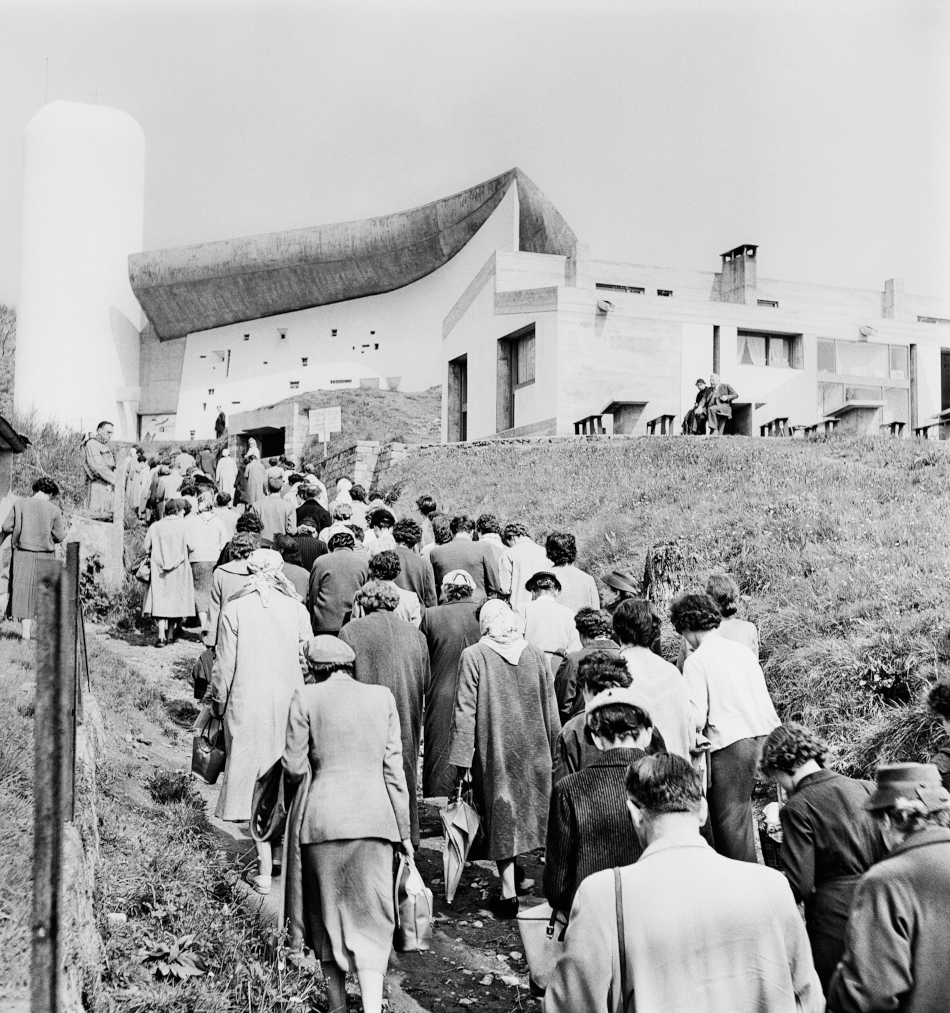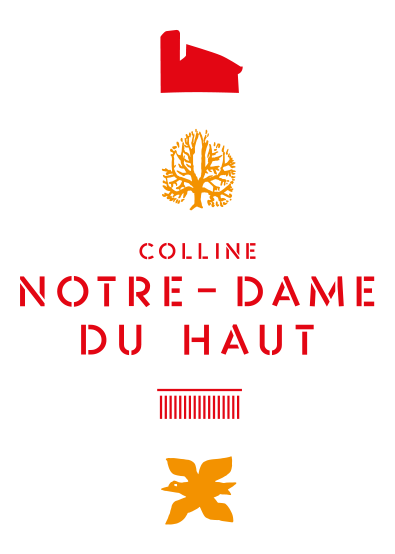- Discovering the Hill
- No content found
- Plan your visit
- No content found
- Agenda
- Shop
The pilgrim’s shelter is the first building by Le Corbusier on the site. This long house consists in two dormitories, a dining hall, a kitchen and a small apartment for the person in charge. Raw concrete is painted in bright colours by Le Corbusier. The roof gardens are original. By insulating the concrete from bad weather, they help to preserve it.
The shelter was first meant for the workers who were building the Chapel. Later it was used by the pilgrims who flocked to Notre-Dame du Haut. It is scheduled to undergo later renovation work and it cannot be visited today. For the caretaker of the site, Le Corbusier built another small house, which has been inhabited by the Chaplain – the priest in charge of the Chapel- ever since.

As the heir of a period dedicated to mechanization, Le Corbusier conceived his houses like “machines for living in”.
This expression may sound reductive, but it is the expression of the architect’s reasoning as he goes back to basics.
Le Corbusier saw in machines the image of an organism, a body with elements logically organized, each with their own functions. For him, the house (or any building) cannot be understood differently: the different rooms, doors and corridors must form a consistent unit enclosed in an envelope (the facades) similar to a skin. The whole is meant to ensure the greatest possible logic to the inhabitants’ activities, without any constraint. Simplicity and functionality are the main features which lead to a comfortable and harmonious space.
The expression invented by Le Corbusier aims at being striking and at making people think. The “machine for living in” sets the question : “what is a house?”
So we mustn’t be ashamed of living in a machine. For Le Corbusier, wasn’t the Parthenon in Athens dubbed “a machine for moving the emotions deeply”? The house, as the temple of the family, is a place of poetry and fulfilment- and no one can blossom in a badly-organized and badly -built organism!
In order to clear the surroundings of his Chapel, Le Corbusier planned, as early as 1952, to have the old buildings, clogging the hill, demolished. As a compensation, the following year he built two houses below the Chapel. The first one, the pilgrim’s shelter, could accomodate the person in charge as well as twenty pilgrims. The other one, quite small, was meant for M. Chippaux, the sacristan and caretaker of the hill.
Before fulfilling their role, they were used as temporary accommodation for the workers of the building site of the Chapel, which was started in 1953. But the Chippaux shunned the house as they were reluctant to abandoning their own -set where the present campanile by Jean Prouvé is standing- so the smallest of the two buildings remained empty until 1958. Later, Father Bolle-Reddat, the first Chaplain of the recently inaugurated Chapel, decided to make it his home.
Ever since, the successive Chaplains have lived there.
For its shape, Le Corbusier found his inspiration in one of his previous projects, never realized: the Murondins’houses.
Imagined during the defeat in 1940, these very simple and very cheap houses were designed as a means to solve the lack of housing and to quickly give a shelter to the victims of bombings.
The architect first thought of realizing the two buildings in wood and rammed earth (earth pressed into formworks) before deciding to use reinforced concrete, which would resist better to bad weather.
The Chaplain’s house is the perfect example of the modern house according to Le Corbusier. Facing the east and designed with large windows both in the walls and the roof, the house is constantly bathed in warm light. The crawl space, on which it sits, offers a perfect insulation and it is reminiscent of the columns advocated by the architect in his 5 Points of Modern Architecture (1927).
A roof garden tops the house, it insulates it and blends it in the greenery. Thus, from the Chapel, the Chaplain’s house fades away into the hill’s landscape. Inside, the bright colours on the walls make the perfect match for the raw concrete embedded with some stones from the old chapel to create a welcoming and congenial atmosphere.
The partition closet which divides the kitchen from the living-room is no doubt the most remarkable piece of furniture.
Typical of the 1950’s furniture design, it calls to mind works by Charlotte Perriand or Jean Prouvé.

13 rue de la Chapelle
F-70250 Ronchamp
+33 (0)3 84 20 65 13
Contact
Until Friday 18 April 2025: 10am to 5pm
From Saturday 19 April 2025: 10am to 6pm
From Monday 12 October 2025: 10am to 5pm
Last admission: 30 minutes before closing time. Closed on 25 December and 1 January
For journalists
Connect
Educational resources
To go further
+33 (0)3 84 20 73 26
Contact
Réalisation DN Consultants